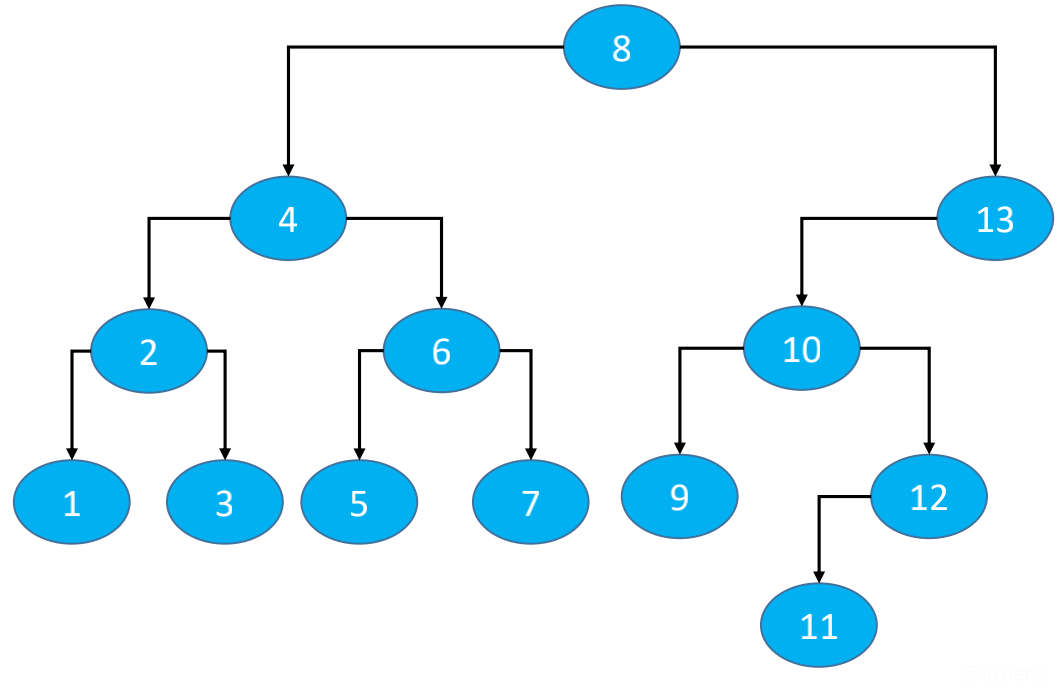前驱后继节点是针对中序遍历的。可以借助二叉搜索树来理解,但是前驱和后继是适用于任何二叉树的。
一、前驱节点
前驱节点(predecessor):中序遍历时当前节点的前一个节点。
如果是二叉搜索树,前驱节点就是前一个比它小的节点。

如上图,中序遍历结果:1、2、3、4、5、6、7、8、9、10、11、12、13。
根据中序遍历的特点可以得知,左子树最右边的节点遍历结束,才开始遍历(输出)根节点。
如果node.left != null,例如上图中的6、13、8,前驱节点就是predecessor = node.left.right.right.right...,终止条件是right == null。
上面的前驱节点是建立在左子树不为空的情况下,如果左子树是空呢(即node.left == null)?
如果node.left == null,就需要找node的父节点,直到node在parent的右子树中,最终parent就是node的前驱节点,即predecessor = node.parent.parent.parent...(例如上图中的7、11、9)。如果最终父节点是空的(node.parent == null),那就没有前驱节点(例如上图中的1)。
1 | private Node<E> predecessor(Node<E> node) { |
二、后继节点
后继节点(successor):中序遍历时当前节点的后一个节点。
如果是二叉搜索树,后继节点就是后一个比它大的节点。
后继节点和前驱节点思路基本一致,唯一区别就是一个是往左找,一个是往右找。
如果node.right != null,例如上图中的1、8、4,后继节点就是successor = node.right.left.left.left...,终止条件是left == null。
上面的后继节点是建立在右子树不为空的情况下,如果右子树是空呢(即node.right == null)?
如果node.right == null,就需要找node的父节点,直到node在parent的左子树中,最终parent就是node的后继节点,即successor = node.parent.parent.parent...(例如上图中的7、6、3)。如果最终父节点是空的(node.parent == null),那就没有后继节点(例如上图中的11)。
1 | private Node<E> successor(Node<E> node) { |